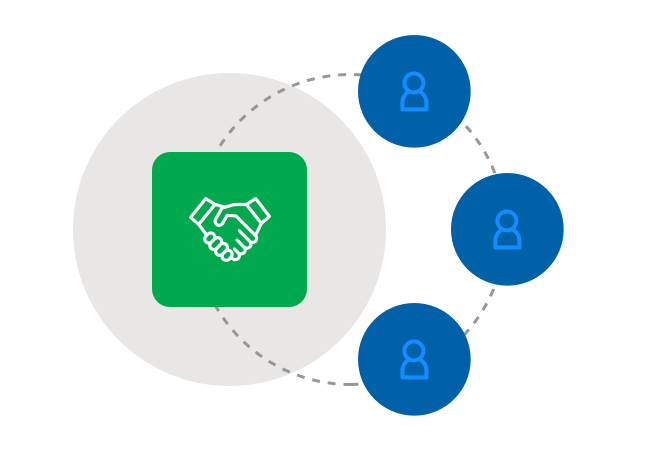From Cybersecurity to Physical Procedures: Reinforcing Company Security in an Altering World
By incorporating the toughness of both cybersecurity and physical protection, business can develop a detailed protection method that addresses the diverse range of risks they encounter. In this conversation, we will discover the transforming risk landscape, the need to integrate cybersecurity and physical security, the application of multi-factor verification measures, the value of staff member recognition and training, and the adaptation of protection steps for remote labor forces. By taking a look at these key locations, we will certainly obtain important understandings into exactly how companies can reinforce their corporate safety and security in an ever-changing world.
Comprehending the Altering Risk Landscape
The progressing nature of the modern globe requires an extensive understanding of the changing threat landscape for reliable business security. In today's electronic and interconnected age, threats to business protection have ended up being more intricate and advanced. As innovation advances and organizations come to be progressively reliant on electronic facilities, the potential for cyberattacks, data violations, and various other safety and security violations has actually substantially raised. It is vital for organizations to stay educated and adjust their protection measures to resolve these evolving threats.
One secret aspect of recognizing the changing danger landscape is acknowledging the various sorts of risks that companies face. Cybercriminals are constantly establishing brand-new methods to manipulate susceptabilities in computer system systems and networks. These risks can vary from malware and ransomware attacks to phishing scams and social engineering tactics. In addition, physical dangers such as burglary, criminal damage, and company reconnaissance remain prevalent worries for organizations.
Surveillance and analyzing the hazard landscape is crucial in order to identify potential threats and susceptabilities. This entails remaining upgraded on the current cybersecurity trends, assessing risk intelligence records, and performing normal danger assessments. By understanding the altering threat landscape, companies can proactively implement appropriate protection steps to reduce dangers and protect their assets, credibility, and stakeholders.
Integrating Cybersecurity and Physical Safety And Security
Integrating cybersecurity and physical protection is crucial for comprehensive company defense in today's interconnected and digital landscape. As organizations progressively count on modern technology and interconnected systems, the limits between physical and cyber threats are becoming blurred. To efficiently guard against these dangers, a holistic approach that incorporates both cybersecurity and physical safety procedures is vital.
Cybersecurity concentrates on securing electronic assets, such as networks, data, and systems, from unapproved accessibility, disturbance, and burglary. Physical protection, on the other hand, includes measures to safeguard physical possessions, individuals, and centers from threats and vulnerabilities. By integrating these 2 domains, companies can address susceptabilities and hazards from both physical and digital angles, therefore boosting their general protection pose.
The combination of these 2 techniques enables a much more detailed understanding of security dangers and makes it possible for a unified response to incidents. Physical accessibility controls can be boosted by incorporating them with cybersecurity procedures, such as two-factor authentication or biometric identification. In a similar way, cybersecurity steps can be matched by physical safety and security actions, such as monitoring cameras, alarms, and safe and secure accessibility factors.

Implementing Multi-Factor Authentication Measures
As organizations increasingly focus on thorough security procedures, one effective technique is the application of multi-factor verification actions. Multi-factor authentication (MFA) is a security approach that needs customers to offer several kinds of identification to access a system or application. This method includes an extra layer of protection by incorporating something the user understands, such as a password, with something they have, like a safety or a finger print token.
By implementing MFA, organizations can considerably boost their safety pose - corporate security. Conventional password-based authentication has its constraints, as passwords can be quickly compromised or failed to remember. MFA alleviates these threats by adding an additional authentication aspect, making it much more difficult for unauthorized individuals to acquire accessibility to sensitive information
There are a number of kinds of multi-factor authentication approaches offered, including biometric authentication, SMS-based confirmation codes, and equipment symbols. Organizations require to assess their particular requirements and pick the most appropriate MFA remedy for their needs.
Nevertheless, the implementation of MFA must be meticulously prepared and executed. It is critical to strike a balance between safety and usability to protect against individual frustration and resistance. Organizations must also consider possible compatibility problems and supply adequate training and support to make sure a smooth shift.
Enhancing Worker Awareness and Training
To strengthen corporate safety and security, organizations have to prioritize boosting staff member awareness and training. In today's swiftly advancing threat landscape, staff members play a vital role in safeguarding a company's sensitive details and assets. Regrettably, several protection breaches occur as a result of human mistake or lack of awareness. Therefore, companies require to purchase extensive training programs to enlighten their workers regarding potential threats and the most check my source effective practices for reducing them.
Efficient worker awareness and training programs should cover a variety of topics, including information protection, phishing attacks, social design, password hygiene, and physical security measures. These programs need to be tailored to the certain requirements and duties of different staff member functions within the organization. Regular training sessions, simulations, and workshops can help employees establish the required abilities and expertise to identify and respond to security dangers effectively.
Moreover, companies ought to motivate a culture of protection recognition and supply recurring updates and tips to keep staff members notified about the most up to date threats and reduction methods. This can be done via interior communication networks, such as newsletters, intranet sites, and email projects. By fostering a security-conscious workforce, organizations can dramatically decrease the chance of protection cases and shield their important possessions from unauthorized accessibility or compromise.

Adapting Protection Actions for Remote Labor Force
Adjusting company safety steps to suit a remote workforce is crucial in guaranteeing the protection of sensitive details and possessions (corporate security). With the raising trend of remote work, organizations need to carry out proper safety and security procedures to mitigate the risks related to this new way of functioning
One important aspect of adjusting safety and security actions for remote work is establishing protected communication networks. Encrypted messaging systems and digital personal networks (VPNs) can aid shield delicate info and stop unapproved gain access to. In addition, companies need look at here to implement the use of solid passwords and multi-factor verification to enhance the safety and security of remote gain access to.
One more essential factor to consider is the application of safe and secure remote gain access to solutions. This includes offering staff members with protected access to business sources and information through online desktop infrastructure (VDI), remote desktop computer procedures (RDP), or cloud-based solutions. These modern technologies make certain that sensitive info continues to be secured while enabling employees to execute their functions effectively.

Last but not least, thorough security awareness training is important for remote staff members. Educating sessions need to cover finest techniques for securely accessing and dealing with sensitive info, recognizing and reporting phishing efforts, and preserving the overall cybersecurity health.
Conclusion
Finally, as the risk landscape continues to evolve, it is critical for companies to strengthen their safety and security gauges both in the cyber and physical domains. Integrating cybersecurity and physical safety and security, implementing multi-factor authentication procedures, great post to read and improving employee awareness and training are crucial steps towards achieving durable business safety and security. Furthermore, adapting security measures to suit remote workforces is crucial in today's altering world. By carrying out these actions, organizations can mitigate risks and safeguard their valuable assets from possible threats.
In this conversation, we will check out the transforming danger landscape, the demand to incorporate cybersecurity and physical protection, the implementation of multi-factor verification steps, the relevance of worker awareness and training, and the adaptation of protection procedures for remote labor forces. Cybersecurity steps can be complemented by physical safety and security steps, such as surveillance electronic cameras, alarm systems, and protected access factors.
As organizations significantly focus on thorough safety and security steps, one effective approach is the application of multi-factor verification steps.In conclusion, as the hazard landscape continues to evolve, it is essential for companies to strengthen their safety and security measures both in the cyber and physical domain names. Incorporating cybersecurity and physical safety and security, implementing multi-factor verification actions, and improving staff member understanding and training are essential actions towards achieving durable company safety.